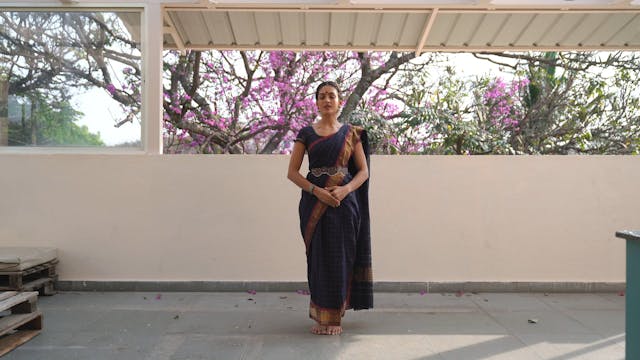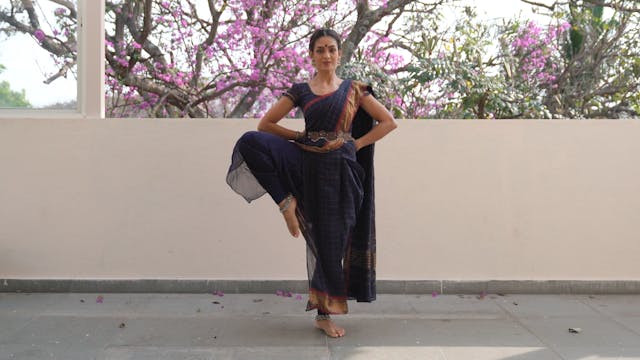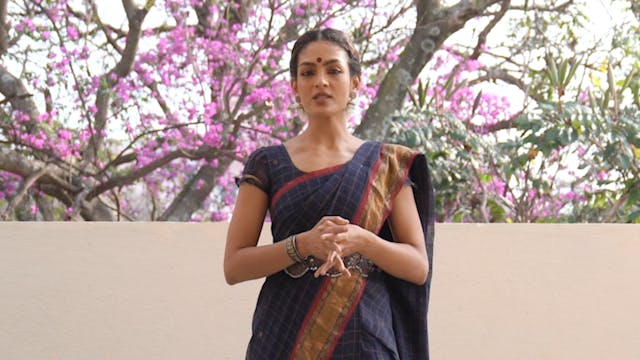The feet are considered one of the Angas, or major limbs according to the Natyashastra.
The movements of the feet are used not only for the precise control in the execution of Nritta but also to communicate meaning in the context of gesture.
Please refer to the Shloka below for pronunciation. Please note that the separate movements of the head when put together in a Shloka form 'Sandhis', or compound words in the Sanskrit language. Words like 'ca', 'thatha', mean "and", "also". The separate words for each movement are also given below the shloka.
Udghattitah samaścaiva tathā agratalasañcarah
Añcitah kuñcitascaiva pādah pañcavidaha smrtah
Udghattita
Sama
Agratalasañcāra
Añcita
Kuñcita
Up Next in Natyashastra: Angas & Upangas
-
Jānu bheda Introduction
The introduction to the isolations of the knee. Some shlokas from subsequent literary texts were put together through Dr Padma Subramanyam's research to help understand the Nātyaśāstra better.
-
Jānu bheda Shloka
Jānu bheda according to the Sangīta Ratnākara, is an Upānga. The knees are considered one of the minor limbs.
The movements of the knees are used not only for the precise control in the execution of Nritta but also to communicate meaning in the context of gesture. Some of the positions elucidate...
-
Ūru bheda Introduction
Explains the things to keep in mind when executing the thigh movements. Please watch carefully before practising with the shloka.


